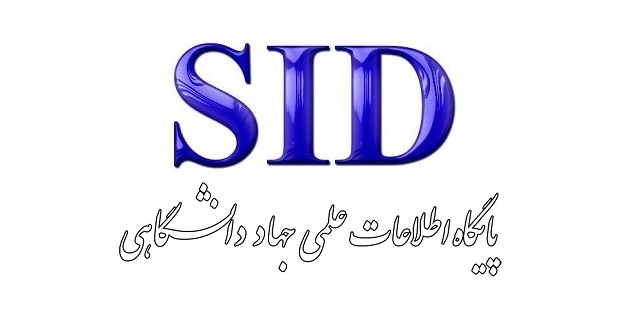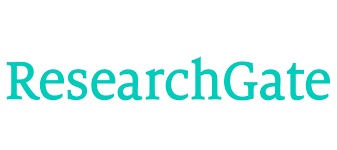طراحی مدل زیرساخت توسعه گردشگری پزشکی با تمرکز بر قابلیتهای سرمایه انسانی در بیمارستانهای دولتی دانشگاه علوم پزشکی ایران
کلمات کلیدی:
گردشگری پزشکی, سرمایه انسانی, بیمارستان های دولتی, دانشگاه علوم پزشکی ایران , نظریه پردازی داده بنیادچکیده
هدف این پژوهش طراحی مدلی برای توسعه زیرساختهای گردشگری پزشکی با تمرکز بر قابلیتهای سرمایه انسانی در بیمارستانهای دولتی دانشگاه علوم پزشکی ایران است. این پژوهش کیفی و از نظر هدف بنیادین است. دادهها از طریق تحقیقات میدانی و مصاحبههای نیمهساختاریافته با 22 نفر از مدیران ارشد بیمارستانهای دولتی دانشگاه علوم پزشکی در سراسر کشور جمعآوری شد. تحلیل دادهها با استفاده از روش نظریهپردازی دادهبنیاد به سبک اشتراوس و کوربین و با سه مرحله کدگذاری باز، محوری و انتخابی انجام گردید. نتایج نشان داد که 18 مؤلفه اصلی بهعنوان اجزای مدل زیرساختی توسعه گردشگری پزشکی شناسایی شدند. این مؤلفهها شامل فرهنگ سازمانی، توسعه و تقویت تجهیزات و زیرساختها، کیفیت خدمات، سرمایه انسانی، مدیریت دانش، فناوری اطلاعات، مدیریت کیفیت، زیرساختهای زیستمحیطی، ساختاری و اقتصادی، چابکی بیمارستان، تمایز در خدمتدهی، بهینهکاوی، عوامل نهادی، جاذبههای گردشگری، بهبود بازار، بهبود مالی و بهبود فرآیندهای داخلی بودند. مدل استخراجشده نشان میدهد که توسعه گردشگری پزشکی در بیمارستانهای دولتی مستلزم توجه همزمان به عوامل انسانی، سازمانی، زیرساختی و نهادی است. تقویت سرمایه انسانی و مدیریت دانش بهعنوان عناصر کلیدی میتوانند نقش مهمی در ارتقای جایگاه ایران بهعنوان مقصد گردشگری پزشکی ایفا کنند.
دانلودها
مراجع
Abidar, L., Zaidouni, D., & En-Nouaary, A. (2020). Customer Segmentation With Machine Learning: New Strategy For Targeted Actions. International Conference on Intelligent Systems: Theories and Applications, https://doi.org/10.1145/3419604.3419794
Agrawal, K. K., & Agarwal, G. (2024). A Comparative Study of Deep Learning vs. Machine Learning Algorithms for Brain Tumor Detection. 2024 1st International Conference on Advances in Computing, Communication and Networking, https://doi.org/10.1109/ICAC2N63387.2024.10894885
Alwabel, A. S. A., & Zeng, X. J. (2021). Data-driven modeling of technology acceptance: A machine learning perspective. Expert Systems with Applications. https://doi.org/10.1016/j.eswa.2021.115584
Aufa Zahrani Putri, A. Z. P. (2023). Penerapan Algoritma Fuzzy C-Means Pada Segmentasi Pelanggan B2B dengan Model LRFM. Jurnal Media Informatika Budidarma, 7(3). https://doi.org/10.30865/mib.v7i3.6150
Barman, D., & Chowdhury, N. (2019). A Novel Approach for the Customer Segmentation Using Clustering Through Self-Organizing Map. International Journal of Business. https://doi.org/10.4018/IJBAN.2019040102
Barney, J. B. (1991). Firm resources and sustained competitive advantage. Journal of Management, 17(1), 99-120. https://doi.org/10.1177/014920639101700108
Chattopadhyay, M., & Mitra, S. K. (2023). Elucidating strategic patterns from target customers using multi-stage RFM analysis. Journal of Global Scholars. https://doi.org/10.1080/21639159.2022.2080094
Chen, B. H., Hashimoto, T., Goto, T., Kim, S. J., Santos, D. J. D., On, A. Y., & Hsiao, T. Y. (2022). Uncloaking hidden repeating fast radio bursts with unsupervised machine learning. Monthly Notices of the Royal Astronomical Society, 509(1), 1227-1236. https://doi.org/10.1093/mnras/stab2994
Dahlberg, T., & Nokkala, T. (2015). A framework for the corporate governance of data - theoretical background and empirical evidence. https://doi.org/10.3846/bme.2015.254
Elkington, J. (1997). Cannibals With Forks: The Triple Bottom Line of 21st Century Business. Capstone. https://doi.org/10.1002/tqem.3310080106
Flambard-Ruaud, S. (2015). Relationship Marketing: An Innovation in Marketing Theory and Practice. https://doi.org/10.1007/978-3-319-11845-1_70
Fuentes, I., Fuentes, I., Nápoles, G., Arco, L., Arco, L., & Vanhoof, K. (2018). Customer Segmentation Using Multiple Instance Clustering and Purchasing Behaviors. https://doi.org/10.1007/978-3-030-01132-1_22
GhGolamveisy, S., Homayooni, S., Shemshaki, M., Sheykhan, S., Boozary, P., Tanhaei, H. G., & Akbari, N. (2024). Application of data mining technique for customer purchase behavior via Extended RFM model with focus on BCG matrix from a data set of online retailing. Journal of Infrastructure, Policy and Development, 8(7), 4426. https://doi.org/10.24294/jipd.v8i7.4426
Hadid, A. B., Bouguelia, S., & Kheddouci, H. (2024). A New Method of B2B Customer Segmentation Based on Firmographic Data, and RFM and Graph Models. 2024 IEEE International Conference on e-Business Engineering, https://doi.org/10.1109/ICEBE62490.2024.00021
Han, L., Fang, J., Zheng, Q., George, B. T., & Liao, M. (2024). Unveiling the effects of livestream studio environment design on sales performance: A machine learning exploration. Industrial Marketing. https://doi.org/10.1016/j.indmarman.2023.12.021
Hitka, M., Pajtinkova-Bartakova, G., Lorincová, S., Palus, H., Pinak, A., Lipoldova, M., Krahulcova, M., Slastanova, N., Gubíniová, K., & Klarić, K. (2019). Sustainability in Marketing through Customer Relationship Management in a Telecommunication Company. Molecular Microbiology. https://doi.org/10.21272/MMI.2019.4-16
Horng, S., & Yenradee, P. (2023). Delivery Service Management System Using Google Maps for SMEs in Emerging Countries. Computers, Materials & Continue. https://doi.org/10.32604/cmc.2023.038764
Kandeil, D. A., Saad, A. A., & Youssef, S. M. (2014). A two-phase clustering analysis for B2B customer segmentation. 2014 International Conference on Intelligent Networking and Collaborative Systems, https://doi.org/10.1109/INCoS.2014.49
Kumari, J., Kumari, K., & Sinha, A. (2024). Assessment of machine learning techniques for improving agriculture crop production. In Handbook of Research on Innovative Approaches to Information Technology in Library and Information Science (pp. 303-322). IGI Global Scientific Publishing. https://doi.org/10.4018/979-8-3693-0807-3.ch014
Lathifah, S. N., & Azzahra, Z. F. (2025). AI-Driven Customers Segmentation Using K-Means Clustering. G-Tech: Jurnal Teknologi Terapan, 9(1), 320-329. https://doi.org/10.70609/gtech.v9i1.6202
Li, P., Wang, C., Wu, J., & Madleňák, R. (2022). An E-commerce customer segmentation method based on RFM weighted K-means. 2022 International Conference on Management Engineering, Software Engineering and Service Sciences, https://doi.org/10.1109/ICMSS55574.2022.00017
Madeira, A. B., Silveira, J. A. G. d., & Toledo, L. A. (2015). Marketing Segmentation: Your Role For Diversity in Dynamical Systems. GESTÃO.Org: Revista Eletrônica de Gestão Organizacional.
Manzoor, A., Qureshi, M. A., Kidney, E., & Longo, L. (2024). A Review on Machine Learning Methods for Customer Churn Prediction and Recommendations for Business Practitioners. IEEE Access. https://doi.org/10.1109/ACCESS.2024.3402092
Maulina, N. R., Surjandari, I., & Rus, A. M. M. (2019). Data Mining Approach for Customer Segmentation in B2B Settings using Centroid-Based Clustering. International Conference on Service Systems and Service Management, https://doi.org/10.1109/ICSSSM.2019.8887739
Miklosik, A., Kuchta, M., Evans, N., & Zak, S. (2019). Towards the Adoption of Machine Learning-Based Analytical Tools in Digital Marketing. IEEE Access. https://doi.org/10.1109/ACCESS.2019.2924425
Mishra, S., Nayak, P., Mallick, R. K., Gadanayak, D. A., & Panda, G. (2024). PQ event identification in PV-wind based distribution network with variational mode decomposition and novel feature enabled random forest classifier. International Journal of Emerging Electric Power Systems, 25(3), 393-404. https://doi.org/10.1515/ijeeps-2023-0123
O'Brien, M., Liu, Y., Chen, H., & Lusch, R. F. (2020). Gaining insight to B2B relationships through new segmentation approaches: Not all relationships are equal. Expert Systems with Applications. https://doi.org/10.1016/j.eswa.2020.113767
Ozan, S. (2018). A Case Study on Customer Segmentation by using Machine Learning Methods. International Conference on Artificial Intelligence, https://doi.org/10.1109/IDAP.2018.8620892
Purnomo, M. R. A., Azzam, A., & Khasanah, A. U. (2020). Effective Marketing Strategy Determination Based on Customers Clustering Using Machine Learning Technique. https://doi.org/10.1088/1742-6596/1471/1/012023
Rajan, D., & Josephine, V. H. (2024). Data Mining Techniques to Enhance Customer Segmentation and Targeted Marketing Strategies. 2024 15th International Conference on Computing Communication and Networking Technologies, https://doi.org/10.1109/ICCCNT61001.2024.10725770
Sakina, N., Arun, A. P., & Gupta, P. K. (2024). Optimizing Customer Segmentation: A Comparative Analysis of Clustering Algorithms Using Evaluation Metrics. 2024 8th International Conference on Computational System and Information Technology for Sustainable Solutions, https://doi.org/10.1109/CSITSS64042.2024.10816952
Sancar, S., & Uzun-Per, M. (2022). Feature Selection in Customer Churn Analysis: Case Study in B2B Business. IEEE International Conference on E-Business Engineering, https://doi.org/10.1109/ICEBE55470.2022.00053
Sheikh, A., Ghanbarpour, T., & Gholamiangonabadi, D. (2019). A preliminary study of fintech industry: a two-stage clustering analysis for customer segmentation in the B2B setting. https://doi.org/10.1080/1051712X.2019.1603420
Vieth, M. (2018). Customer segmentation in B2B markets: the relationship between customer segmentation and market orientation.
Wisesa, O., Andriansyah, A., & Khalaf, O. I. (2020). Prediction Analysis for Business To Business (B2B) Sales of Telecommunication Services using Machine Learning Techniques. Majlesi Journal of Electrical Engineering. https://doi.org/10.29252/MJEE.14.4.145
Wu, M., Andreev, P., Benyoucef, M., & Hood, D. (2024). Unlocking B2B buyer intentions to purchase: Conceptualizing and validating inside sales purchases. Decision Support Systems. https://doi.org/10.1016/j.dss.2023.114165
دانلود
چاپ شده
ارسال
بازنگری
پذیرش
شماره
نوع مقاله
مجوز
حق نشر 2025 آذر میدخت اباذری (نویسنده); مرتضی حضرتی ; موسی رضوانی چمن زمین (نویسنده)

این پروژه تحت مجوز بین المللی Creative Commons Attribution-NonCommercial 4.0 می باشد.









